 |
| Home - Classes - Lineage - Medicine - Theory - Gallery - Links |
|
| Practice |
"People are the same by nature.
They differ only according to practice."
- Confucius
"There is no right or wrong in meditation.
There is only practice and no practice."
- Master Eihei Dogen
|
 |
Practice and study is the lifeblood of the martial arts. As both a quantity and a quality it is what ultimately differentiates success from failure in any attempt to learn a practical skill. Of equal importance in the internal cultivation tradition, practice is both the alchemical furnace and the compounded elixir itself. Much more than simply a means to an end -- regardless of whether one is preparing oneself for combat or the afterlife, whether one is seeking more strength, greater health, clearer consciousness or just a little bit better balance -- as long as internal value (gong) is the destination, practice is the path.
Now just to be clear, what is meant here by "practice" is nothing other than the regular and repeated physical performance of whatever set or series of techniques is being passed down by whichever lineage or teacher one is studying with. No matter the discrepancies between teachers and lineage branches, between styles of practice and reasons for practice, pretty much all are in agreement that it is primarily through the physical act of repeatedly practicing, studying and performing the particular techniques being taught that a) the said techniques are initially transmitted and b) their mastery is eventually conferred. Thus the theoretical promise of Taichi theory is made immanent through practice and through practice alone. This perspective on practice is significantly different from the more familiar Western notion of "practice makes perfect." In this more classical Taichi sense of practice, it would be more like: "practice is perfect."
|
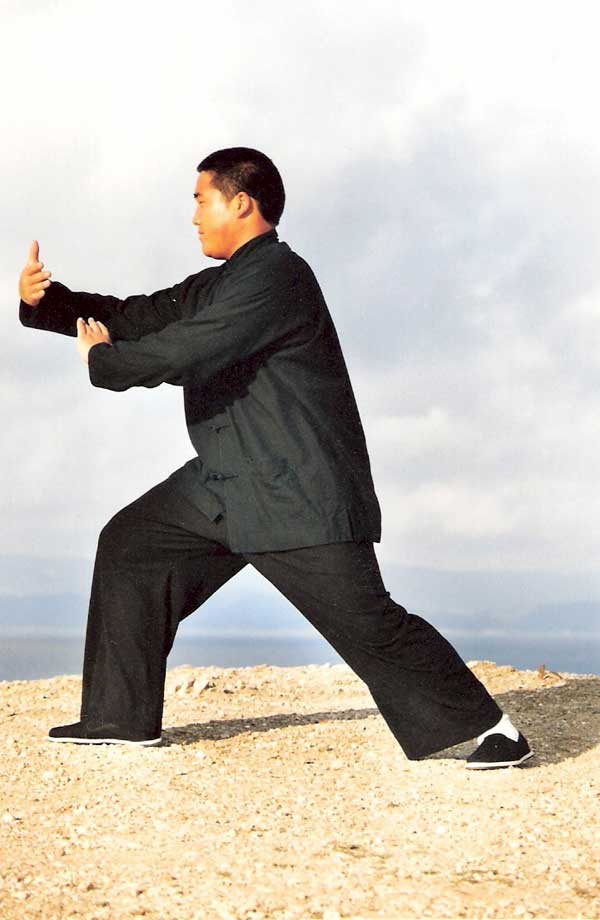 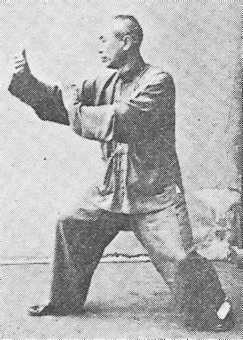 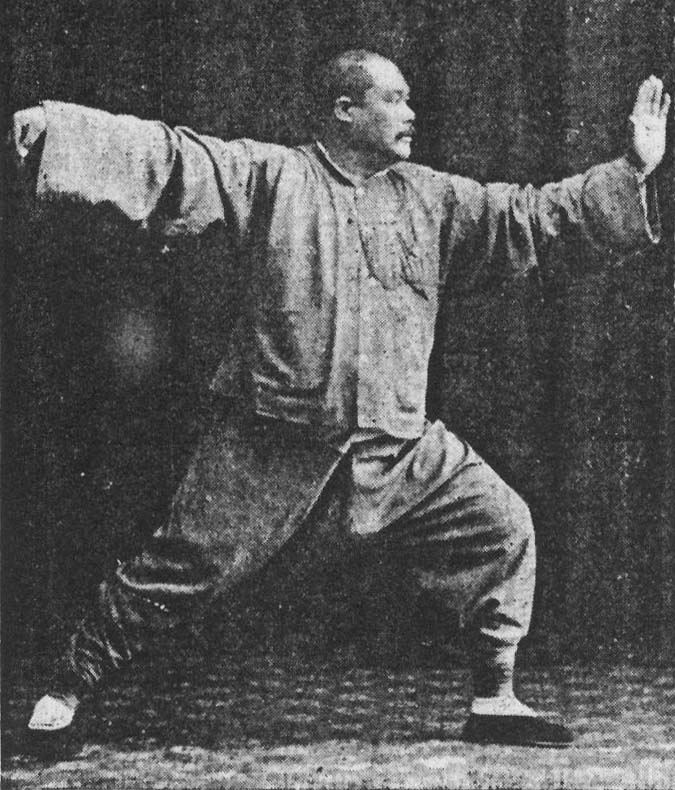 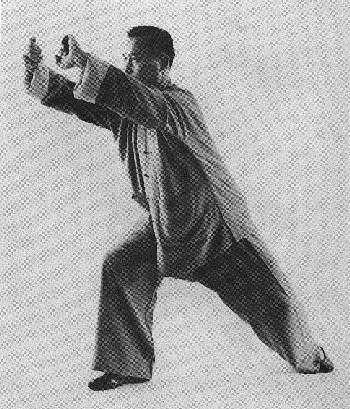 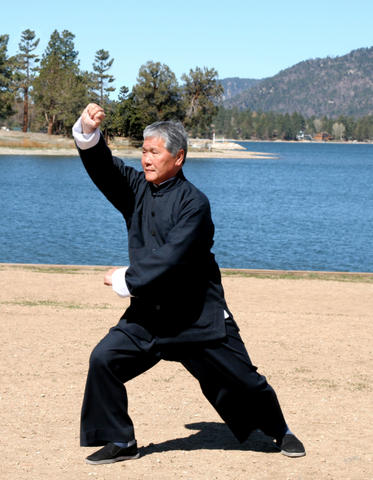 |
The particular forms and techniques that we use and practice at the Falling Water School have been thoroughly time-tested and effectively refined through multiple generations of highly accomplished and respected practitioners. They were intially taught to us by Master Tung Kaiying of Los Angeles, California, who has been practicing and teaching them his entire life and originally learned them when he was a boy from his grandfather in Hong Kong, Master Tung Yingchieh, himself also a lifelong practitioner and one of the most respected Taichi teachers of the 20th century in China, who in turn learned the art from one of the most influential Taichi teachers of all time, the famous Beijing Master Yang Chengfu, who in turn was merely translating into a new context (widespread public classes) the movements and techniques that he had learned from the more secretive traditions of his father and uncle, who had learned them initially from their father, the great Master Yang Luchan, popularly known as "Yang the Invincible," the originator of our current Yang Style system and the person who ininitially made Taichi Chuan famous across China. Master Yang himself however was merely adapting into a new context (secularized urban life) the secret movements and methods that he had learned from his own teacher in rural Chen Village, Master Chen Changxing, where these very same techniques (and many others like them) had been being practiced, cultivated and polished by the lucky Chen family for more than 20 generations prior. Phew! And then there was the Master who taught the original Chen patriarch back in the 1500s, and the long line of teachers trailing deep into the mountains behind him at least another 500-1000 years more until the trail finally dissipates into a hermetic oblivion of myth and legend going all the way back to the mystical origins of Chinese civilization itself. Also don't forget all the loose strands of students and peers branching off at every link in this chain and integrating their experiences with the world and then circling back to enter again into the central thread of lineage that we collectively know around the world as Taichi Chuan.
In other words, this is a very old practice and a very old way of approaching the pleasures and problems of living without sacrificing grace, poise, dignity or integrity. The cumulative life energy and human experience that has gone into forming the particular postures, movements and principles of the exercises and techniques we have come to call Taichi Chuan is truly staggering. It is a tremendous honor to be a part of continuing this transmission and to be able to contribute to the global stewardship of the wisdom of the ages in such a way.
This is the reason why we offer a salute both before and after practicing.
|
| |
| The Path of Practice |
For all prospective students of Taichi Chuan the first phase of training is to learn the primary sequence of movements called "slowset" well enough to be able to perform them on one's own from start to finish without interruption. This could take anywhere from three months to three years depending on the quantity and quality of one's instruction and practice.
The next step is to develop and employ the principles of the Slowset both inwardly and outwardly. This means spending more time practicing the various strength building exercises from class and practicing slowset more pateiently and calmly to build better aligment and clearer focus. It also means getting introduced to the exciting realm of partner practice called Push Hands, starting with fixed-steps and using one hand only in an exercise called Single Circle, but gradually evolving into using both hands in a loose series of simple movements called Double Push Hands.
The next phase of training would be to develop more variant speeds and a more dynamic expression in one's practice. Initially this means practicing with faster tempos and learning the Fastset and Tung Family Set variations. It also means learning the basic moving-step Push Hands routines such as Three-Step, Four Corners and Circle Walking. But ultimately it means integrating one's sensitivity and strength and learning how to balance one's internal awareness with one's external being (i.e. how to more comfortably live in the world as oneself).
The next phase is to simply practice more, longer, deeper and with increasingly clearer energy and focus. This is facilitated by finding ever more external applications for the internal theory of movement that is Taichi and might look like learning the Weapon Forms, an alternate version of slowset called "Kai He (Open and Close)," the Partner Practice Forms (Duilian), the martial applications of Slowset movements (Sanshou) and even beginning to explore the creative potential of freestyle push hands.
The final phase is to keep persevering into the practice deeper and deeper, refining the forms, consolidating the center and adapting the principles into more and more of a fluid whole with all other aspects of one's life. Here the subtler aspects of Taichi become more and more significant and energy becomes more and more of a spiritual phenomenon. At this point in training the most logical step is to teach someone else how to do it and thus the circle of Taichi continues through time.
|
The Three Venues of Practice
Solo Practice (on one's own)
meditation
form practice
textual study
private lessons
Group Training (with local community)
open practices
small group classes
theory classes
Focused Retreat (out in the world)
out-of-town workshops and camps
wilderness hermitage
community service
|
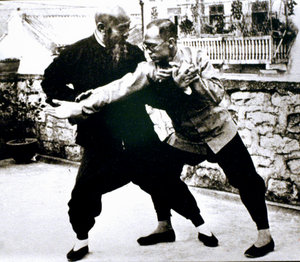 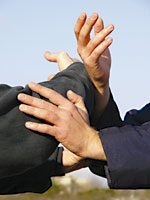 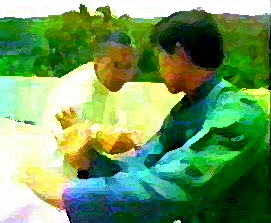 .jpg)
|
| |
| Practice Techniques and "Body Rules" from the Classics |
Hao's
Treasury of
exquisite Peace |
The Art of
Taichi Chuan |
Method and Application
of Taichi Chuan |
by Li Yi Yu, 1881 |
by Yang Chengfu and
Chen Weiming, 1925 |
by Yang Chengfu and Tung Yingchieh, 1931 |
|
涵胸
huddle the chest
拔背
pluck the back
裹襠
bundle the seat
護肫
protect the gut
提頂
lift the crown
吊襠
drop the seat
騰挪
shift swiftly
閃戰
evade struggle |
虛領頂勁
"empty energy" in crown and nape
含胸拔背
harbor the chest and pluck up the back
沈肩墜肘
sink the shoulders and drop the elbows
鬆腰
loosen the waist
分虛實
differentiate empty and full
上下相隨
mutually coordinate above and below
內外相合
mutually harmonize inner and outer
相連不斷
continue mutually without stopping
用意不用力
use mind and not force
動中求靜
move from the center and seek calm |
提起精神
activate and raise consciousness
虛靈頂勁
empty numinous energy in crown
含胸拔背
harbor the chest and pluck up the back
鬆肩墜肘
loosen the shoulders and drop the elbows
氣沉丹田
sink qi to dantian
手與肩平
level the hands with the shoulders
胯與膝平
level the hips with the knees
尻道上提
hold up the spine from the sacrum
尾閭中正
straighten and center the tailbone
內外相合
mutually harmonize inner and outer |
不强用力
use strength without force
以心行氣
use mind to move energy
步如貓行
move and step like a cat
上下相隨
mutually coordinate above and below
呼吸自然
breathe naturally as is
一線串成
link one thread through everything
變換在腰
change and transform from the waist
氣行四肢
cycle energy through the four limbs
分淸虛實
clearly differentiate empty and full
圓轉如意
shift and turn like you mean it |
| |
| Practice Tips |
Master Tung Kaiying offers the following guidelines to best maximize the beneficial effects of practicing Taichi Chuan (from his book called "Learning Tai Chi Chuan"):
- Practice every day. Twice a day (morning and evening) is good, while three times a day is better still.
- Be serious about your practice. Concentrate on the movements and do not allow your mind to wander. Exercise with your whole being – mind and body. This type of concentration is difficult to achieve, but very important.
- Be careful not to over exert yourself. Gradually your strength will develop and you will be able to do more. Stop and rest if you become too tired.
- Do not practice immediately after eating a heavy meal. First rest for thirty to sixty minutes.
- After practicing, do not sit down immediately. Rather, walk around for a few minutes, relax slowly, and then sit down. This facilitates the circulation of energy and blood.
- In warm weather, allow your body to cool off naturally after practice. Do not take a cold shower. If you must shower, use warm water, though it is better to wait a little while before bathing. Likewise in cold weather, avoid becoming chilled, especially right after practice, by wearing the appropriate clothing.
Eventually, after some months of practice, students may suddenly have the feeling that they are not doing as well as they were just a little while ago. This should be viewed as a sign of improvement. It shows that the understanding of Tai Chi Chuan is becoming deeper. If one has not improved, how can one judge whether or not one is doing better or worse? How is one able to compare? This is a necessary step for every beginner. Knowing this, do not be discouraged. Continue to practice faithfully with a positive attitude, confident that improvement will come.
|
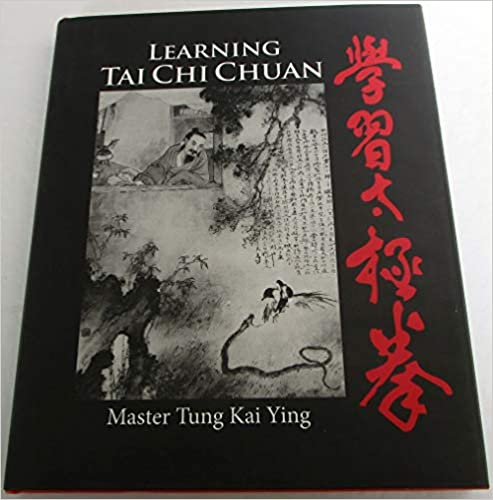
Learning Tai Chi Chuan
by Master Tung Kaiying, 2012
purchase HERE on Amazon |
| |
"On the mountain of truth you can never climb in vain: either you will reach a point higher up today, or you will be training your powers so that you will be able to climb higher tomorrow."
-- Friedrich Nietzsche
|
 |
| 802-349-2725 -- cloudhandy@yahoo.com |











.jpg)
